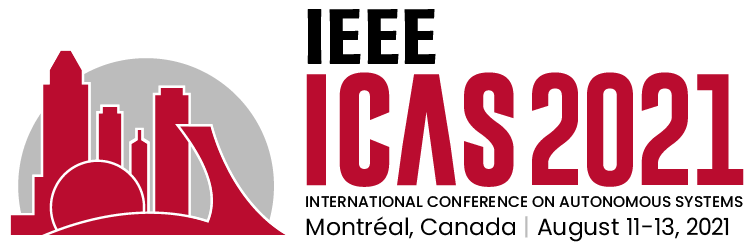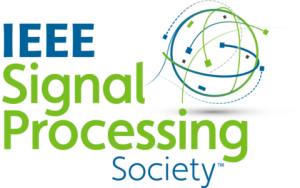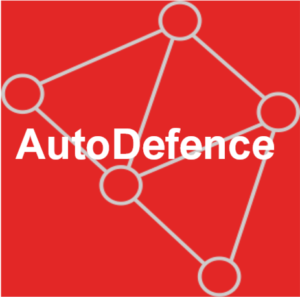Autonomous Vehicle Vision (AVVision)
Rui Fan ([email protected]) and Ioannis Pitas ([email protected]) | https://avvision.xyz/icas21
With a number of breakthroughs in autonomous system technology over the past decade, the race to commercialize self-driving cars has become fiercer than ever. The integration of advanced sensing, computer vision, signal/image processing, and machine/deep learning into autonomous vehicles enables them to perceive the environment intelligently and navigate safely. Autonomous driving is required to ensure safe, reliable, and efficient automated mobility in complex uncontrolled real-world environments. Various applications range from automated transportation and farming to public safety and environmental exploration. Visual perception is a critical component of autonomous driving. Enabling technologies include: a) affordable sensors that can acquire useful data under varying environmental conditions, b) reliable simultaneous localization and mapping, c) machine learning that can effectively handle varying real-world conditions and unforeseen events, as well as “machine-learning friendly” signal processing to enable more effective classification and decision making, d) hardware and software co-design for efficient real-time performance, e) resilient and robust platforms that can withstand adversarial attacks and failures, and f) end-to-end system integration of sensing, computer vision, signal/image processing and machine/deep learning. The AVVision special session will cover all these topics. Research papers are solicited in, but not limited to, the following topics:
3D road/environment reconstruction and understanding;
Semantic/instance driving scene segmentation and semantic mapping;
Self-supervised/unsupervised visual environment perception;
Car/pedestrian/object/obstacle detection/tracking and 3D localization;
Car/license plate/road sign detection and recognition;
Driver status monitoring and human-car interfaces;
Deep/machine learning and image analysis for car perception;
Adversarial domain adaptation for autonomous driving;
Bio-inspired vision sensing for car perception.
Advanced Navigation for Networked Autonomous Systems
Siwei Zhang ([email protected]), Henk Wymeersch ([email protected])
Networked autonomous system is an emerging concept which increasingly attracts attention for a wide spectrum of applications such as autonomous driving, internet of things (IoT), search and rescues, wireless sensor networks (WSNs), deep-sea and extraterrestrial explorations, and UAV swarms. In a networked autonomous system, a myriad of spatially separated autonomous agents regularly exchange information and coordinate to achieve certain tasks, such as simultaneous environmental sensing at different locations. By collaborating over the network, agents increase their situation awareness level, and also their navigation capability, which are essential for high autonomy. Navigation for networked autonomous systems comprises of:
- High precision and low latency localization of the agents and the objects of interest in the surrounding, especially in GNSS-impaired environments;
- Joint system optimization and signal processing for communication, localization, sensing, timing, radar and control;
- Autonomous location/trajectory optimization of agents.
Despite the great potential of a networked autonomous system, navigation is a challenging problem due to the non-ubiquitous GNSS reception and the high dimensionality of the network. In addition, the interdisciplinary flavor involving signal processing, communications, radar, control, robotics, and particularly, artificial intelligence (AI), makes the navigation for networked autonomous systems an exciting and timely relevant topic. Navigation is a self-contained topic which is of interest to many autonomous systems, but yet well distinguished from the main tracks of the conference. Topics of interest include but are not limited to:
- Fundamentals on network navigation;
- Cooperative localization, navigation and SLAM;
- Autonomous and swarm navigation;
- Multi-agent control and path planning;
- Synchronization and age of information (AoI) in network navigation;
- Decentralized estimation and optimization;
- Joint optimization for communication, localization, sensing, timing, radar and control;
- Applying AI for network navigation;
- Network navigation techniques, testbeds and experiments for specific applications like autonomous vehicles, IoT, WSNs, swarm robotics, space and deep-sea explorations, and UAV networks.
Trustworthy Autonomous Human-Machine Systems
Yaoping Hu ([email protected]) and Baris Fidan ([email protected])
Effective adoption of autonomous human-machine systems depends on these systems’ trustworthiness at the structural, algorithmic, behavioural, and system levels. Design of such trustworthy systems requires obeying certain principles of rationality, logic reasoning, risk/bias handling, and ethics under pragmatic constraints of hardware, software, and human cognition. Interdisciplinary research efforts are ultimately indispensable to the development of trustworthy systems that incorporate metaphysical, epistemological, and/or normative human and machine theories of trust. Showcasing scientific contributions derived from these efforts, this special session provides a venue for fostering collaboration and instigating further growth in this exciting field – where humans and machines need to interact trustfully in a hybrid environment.
Explainable Machine Learning for Autonomous Systems
Yong Man Ro ([email protected]), Kostas Plataniotis ([email protected]), and Parnian Afshar (p [email protected])
Machine learning, in particular deep learning, achieves human-level performance in many applications, including those related to autonomous systems. The black-box nature of these techniques, however, limits their practical usage, causing a surge of interest towards developing explainable and interpretable machine learning. Improving the interpretability not only increases the trust in the model, but also contributes to detecting the failure points. Despite advancements, this topic remains challenging, motivating this special session on explainable machine learning for autonomous systems. Topics of the special session include but not limited to:
- Achieving a trade-off between the model’s performance and explainability;
- Developing a human-in-the-loop mechanism to increase the trust in the model;
- Transparent machine learning models for autonomous systems;
- Theory and applications of explainable machine learning for autonomous systems;
- Quantifying the model’s confidence in its output;
- Assessing the strength and weakness of the model;
- Model agnostic methods for explainable machine learning in autonomous systems;
- Query and interactive machine learning for autonomous systems;
- Reproducible and replicable machine learning for autonomous systems;
- Adaptive explainable systems.
Automotive Radar Imaging
Kumar Vijay Mishra ([email protected]), and Shunqiao Sun ([email protected])
We are witnessing an autonomy race to get the first fully self-driving car on the road. This boom in automotive research is driving many technological, socio-political, economic, and environmental policies around the world. The radar community has emerged at the forefront of fulfilling the promise of a self-driving car. As the automotive community inches closer to accomplishing this goal, more and newer problems get identified. This cycle is leading to emergence of new technologies in automotive radar whose performance is expected to be very close to lidar imaging. There has been a quantum leap in automotive imaging radars with the development of synthetic aperture processing for identifying objects from a moving vehicle. The developments in machine learning have inevitably penetrated automotive research. Many signal processing algorithms earlier applied to only conventional radars are now increasingly re-interpreted and adapted for automotive imaging radars. The objective of this Special Session is to highlight the challenges and opportunities in these new radar imaging technologies covering the phenomenology, system architecture, circuit technology, signal processing, scanning, and learning for self-driving.
Autonomous Information Systems and Databases
Mehdi Kargar ([email protected]), Jaroslaw Szlichta ([email protected]), and Morteza Zihayat ([email protected])
Autonomous systems refer to the ability for systems and machines to operate on their own, with little or no human interaction. Such efficiency of reducing manpower is of paramount importance in modern information systems and databases. The autonomous systems deliver the following key benefits:
- self-management,
- self-repair, and
- self-security.
Thus, they are able to disrupt part of the information technology’s (IT) status quo, as the need for IT managers and database administrators is decreased. This has been of great interest, especially in the era of cloud computing, when many IT managers are not equipped with the latest advancement in setting up the environment. The recent advancements in artificial intelligence (AI) and machine learning (ML) have greatly improved autonomous information systems and databases via predictive and prescriptive analytics. The goal of this special session is to showcase novel methods and frameworks in the broad research area of autonomous information systems and databases, particularly focusing on the applications of AI and ML (including deep learning). Topics of interest include, but are not limited to:
- Autonomous Information Systems
- Autonomous Databases
- Autonomous Cloud-based Systems
- Autonomous Graph Databases
- The Role of Machine Learning in Designing Autonomous Systems
- Automatic Detection Cyber-attacks in Cloud Infrastructure
Autonomous Diagnosis/Prognosis of COVID-19
Farnoosh Naderkhani([email protected]), Moezedin Javad Rafiee ([email protected])
Novel Coronavirus (COVID-19) has drastically overwhelmed more than 200 countries around the world affecting millions and claiming close to 15 million human lives, since its first emergence in late 2019. Considering statistics and impacts together with the fact that COVID-19 can easily spread if infected cases are not isolated/treated in a timely fashion, autonomous and accessible diagnosis/prognostic systems are of significant importance. Autonomous Diagnosis/Prognosis of COVID-19-related respiratory complications via medical images such as Computed Tomography (CT), can play an important complementary role to identify the COVID-19 infection with a high sensitivity, which is a critical asset. This special session aims to cover different topics related to Diagnosis/Prognosis of COVID-19.





